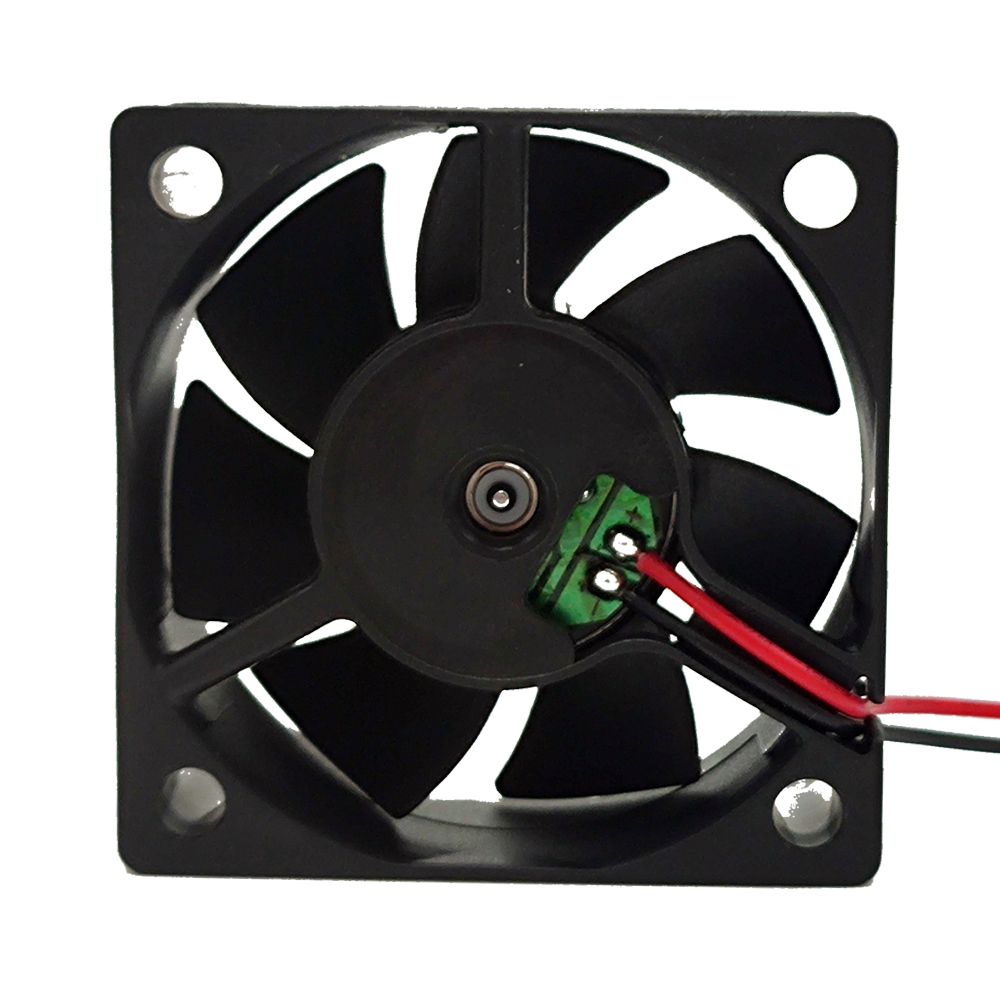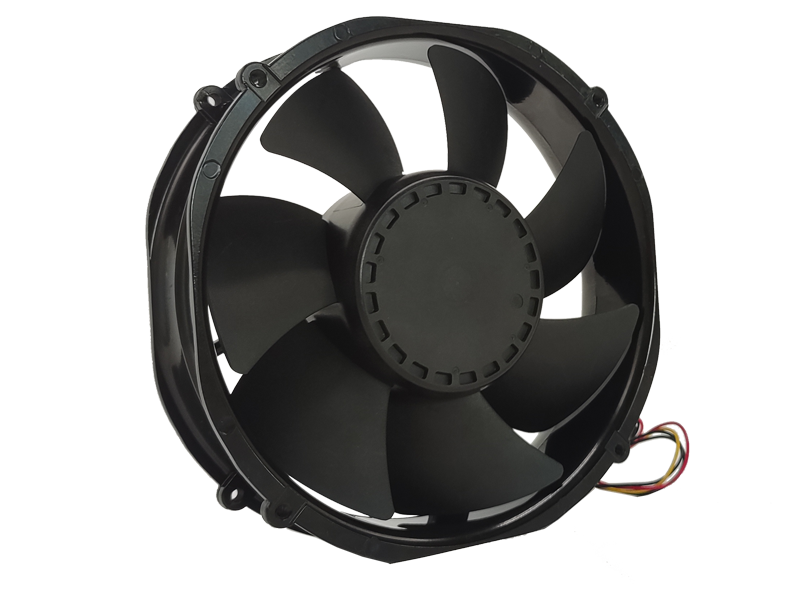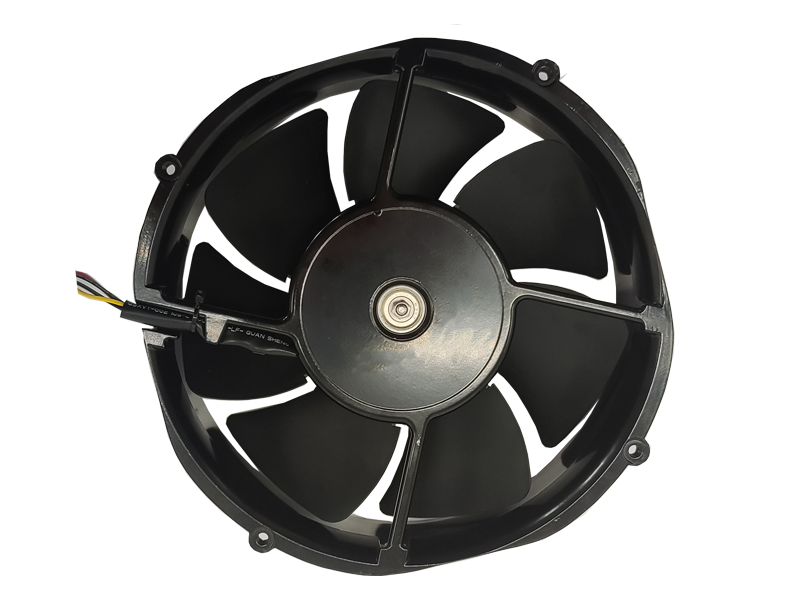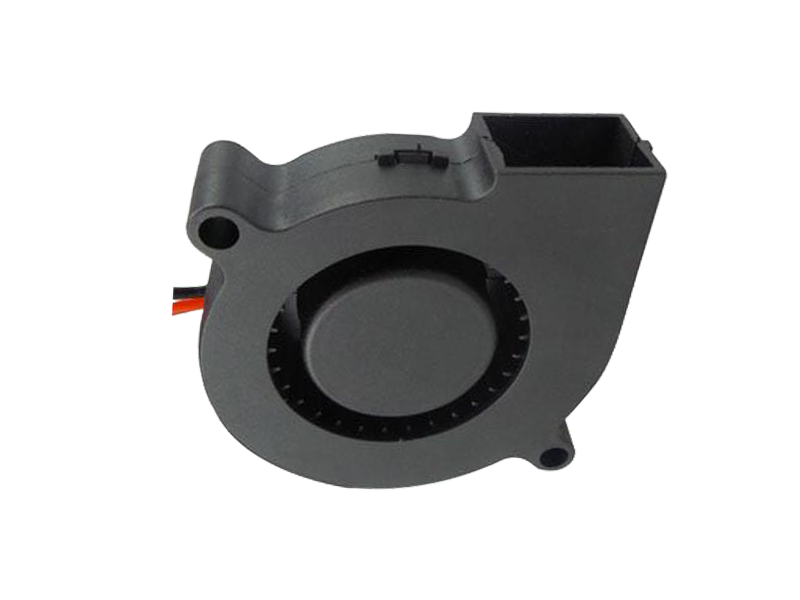Industrial fans are essential components of various industrial systems, serving as crucial equipment for ventilation, cooling, and air circulation in large-scale operations. Whether it is a factory, a warehouse, or a power plant, the functionality and efficiency of industrial fans can directly impact operational efficiency, product quality, and even employee comfort. This article delves into the importance of industrial fans from a product perspective, discussing how their design, innovation, and integration into different sectors contribute to the smooth running of industrial operations.
1. The Role of Industrial Fans in Manufacturing
The primary function of an industrial fan is to provide proper ventilation, ensuring a consistent airflow in factories, warehouses, and production lines. These fans help in:
Heat Dissipation: High temperatures are a common issue in industrial settings, especially in heavy manufacturing industries such as metal processing, plastics, and chemical production. Industrial fans are instrumental in dissipating the heat generated by machinery, equipment, and processes, keeping temperatures within safe operating ranges.
Air Quality Maintenance: Many manufacturing processes emit fumes, dust, and harmful gases. Industrial fans, especially those in exhaust systems, help in expelling these contaminants, contributing to a safer and healthier work environment.
Employee Comfort: In industries that require a significant amount of manual labor, the comfort of workers is a critical factor. Industrial fans play an essential role in regulating the internal temperature of workplaces, enhancing employee productivity by maintaining a comfortable climate, which is particularly important in warm climates or in jobs that involve heavy machinery.
Humidity Control: Certain manufacturing environments, such as those in food production or pharmaceuticals, require precise humidity control. Industrial fans can help in maintaining appropriate levels of humidity, reducing the risk of mold growth, and preserving product quality.
2. Key Considerations in the Design of Industrial Fans
Designing an industrial fan is not a simple task, as it involves a range of factors, including airflow efficiency, noise reduction, energy consumption, and maintenance requirements. Let's take a deeper look at the primary design considerations that influence the quality and effectiveness of industrial fans:
a. Airflow Efficiency
At the heart of any industrial fan is its ability to move air efficiently. The fan's design, including the blade shape, size, and motor power, determines how much air can be moved per unit of time. For instance, axial fans, which push air parallel to the shaft, are often used for ventilation in spaces where high airflow is required. On the other hand, centrifugal fans, which create airflow by spinning air outward from the center, are often used in applications requiring high static pressure.
A fan's airflow efficiency is critical because it influences energy consumption and operational costs. More efficient fans require less energy to move the same volume of air, which translates into cost savings over time and a reduction in environmental impact.
b. Durability and Reliability
Industrial environments often involve high levels of dust, humidity, and temperature fluctuations. Therefore, industrial fans must be built with durable materials and components to withstand such harsh conditions. The fan blades may be constructed from galvanized steel, aluminum, or composite materials, each selected for its ability to resist corrosion and wear. Similarly, high-performance bearings and motors are necessary to ensure long-term reliability and reduce downtime for repairs and maintenance.
Regular maintenance is critical to ensuring the longevity of industrial fans. Features such as corrosion-resistant coatings and easy access for cleaning and repairs can help reduce maintenance costs and downtime.
c. Energy Efficiency
Energy costs can be a significant part of the total operating costs in industrial settings. Fans can account for a large portion of energy consumption, especially in large facilities. Hence, energy-efficient fans that consume less power while maintaining high performance are a highly sought-after product. Modern industrial fans use technologies like variable frequency drives (VFDs) to adjust motor speed, ensuring that the fan operates at the optimal capacity based on real-time needs. This level of control reduces unnecessary energy consumption and lowers operational costs.
d. Noise Reduction
In industrial settings, high noise levels can negatively impact employee well-being and productivity. Excessive noise from machinery, including fans, can lead to hearing damage and increased stress. Thus, industrial fan manufacturers are focused on developing quieter fan designs that provide the necessary airflow without excessive noise. Innovations such as sound-dampening enclosures and vibration-reducing mounts are commonly used to minimize noise while maintaining high airflow efficiency.
3. Applications of Industrial Fans Across Sectors
Industrial fans find applications in a wide array of industries. Their versatility is what makes them indispensable in many operations. Here are some notable sectors where industrial fans are essential:
a. Manufacturing and Production Facilities
Factories involved in the production of goods, whether it’s automotive parts, electronics, or consumer goods, require effective ventilation and cooling systems. Industrial fans help in removing heat from production areas and ensuring that manufacturing machinery, which often operates at high temperatures, stays within safe operating limits. In addition, fans are used to maintain air quality by expelling smoke, fumes, and particulate matter, ensuring compliance with health and safety regulations.
b. Chemical and Pharmaceutical Industries
In chemical plants and pharmaceutical manufacturing environments, air quality and temperature control are critical. Industrial fans are used in exhaust systems to remove volatile fumes, gases, and chemicals from the air, preventing the accumulation of harmful substances and ensuring a safe working environment. In the pharmaceutical industry, fans are also used to regulate humidity levels, which is vital for preserving the integrity of the products being manufactured.
c. Agricultural and Food Processing
Agricultural operations, particularly those involving the storage and processing of food, require ventilation systems that ensure temperature and humidity levels are kept at optimal levels. Industrial fans are used in cooling systems for food storage, preventing spoilage and ensuring that the products remain fresh. Similarly, ventilation is crucial in warehouses for storing crops and produce, where fans help control air circulation and prevent the growth of mold and bacteria.
d. HVAC Systems in Commercial and Industrial Buildings
In large commercial and industrial buildings, HVAC (Heating, Ventilation, and Air Conditioning) systems depend on industrial fans to provide the necessary airflow for cooling and heating. Fans are used to circulate air through duct systems and are vital for maintaining comfortable indoor conditions, especially in large spaces like shopping malls, office buildings, and factories.
e. Power Plants
Power plants, particularly those involved in the generation of electricity, require large-scale cooling and ventilation systems to prevent overheating of machinery and turbines. Industrial fans in power plants help cool down the machinery, reduce the buildup of harmful gases, and circulate fresh air into the system, thereby ensuring efficient and safe operation.
4. Future Trends in Industrial Fan Technology
As industries become more automated and technologically advanced, the role of industrial fans continues to evolve. Some of the key trends that are expected to shape the future of industrial fan products include:
a. Smart Fan Technology

As the industrial Internet of Things (IoT) expands, fans are becoming more integrated with intelligent systems. Smart industrial fans can monitor their own performance and adjust based on real-time data, providing better energy efficiency and reducing the risk of system failure. These fans can be connected to centralized control systems that help monitor energy usage, maintenance schedules, and airflow efficiency.
b. Environmental Sustainability
There is increasing pressure on industries to reduce their environmental footprint, and energy-efficient products such as industrial fans are at the forefront of this shift. Manufacturers are focusing on creating fans with more sustainable materials, less energy consumption, and lower emissions. Additionally, advanced design techniques allow for the use of renewable energy sources to power industrial fans, contributing to green manufacturing practices.
c. Customization and Flexibility
As manufacturing environments become more specialized, there is a growing demand for customizable fan solutions. Industrial fans will increasingly be designed to meet the unique needs of individual facilities. Custom fan sizes, blade designs, and control systems are becoming more common as businesses demand systems that are tailored to their specific operational requirements.
5. Conclusion
Industrial fans play a pivotal role in maintaining efficiency, safety, and comfort in a wide range of industrial environments. From their contribution to heat dissipation, ventilation, and air quality management, to their impact on employee well-being and productivity, the significance of industrial fans cannot be overstated. As industries continue to evolve, industrial fan technology is expected to become even more sophisticated, with innovations aimed at increasing energy efficiency, reducing noise levels, and enhancing sustainability. Understanding these key elements of industrial fan design and operation allows businesses to make informed decisions about the systems that best meet their needs, ensuring continued operational success and compliance with health and safety standards.
Recommended Products

The main purpose:Car charging station

The main purpose:Car charging station

The main purpose:Electronic refrigerators, water dispensers, direct drinking machines, inverter power supplies
Address:No. 4137, Longgang Avenue (Henggang Section), Henggang Community, Henggang Street, Longgang District, Shenzhen
hotline:13530005572(Chen)15112579390(Li)


Welcome all friends to come for consultation and negotiation.
Copyright 2024 @ Shenzhen Youneng Xinyuan Electronics Co., Ltd.,(industrial fans,industrial blowers,axial fans,cooling fans manufacturer,centrifugal fans,ac cooling fans,dc cooling fans)